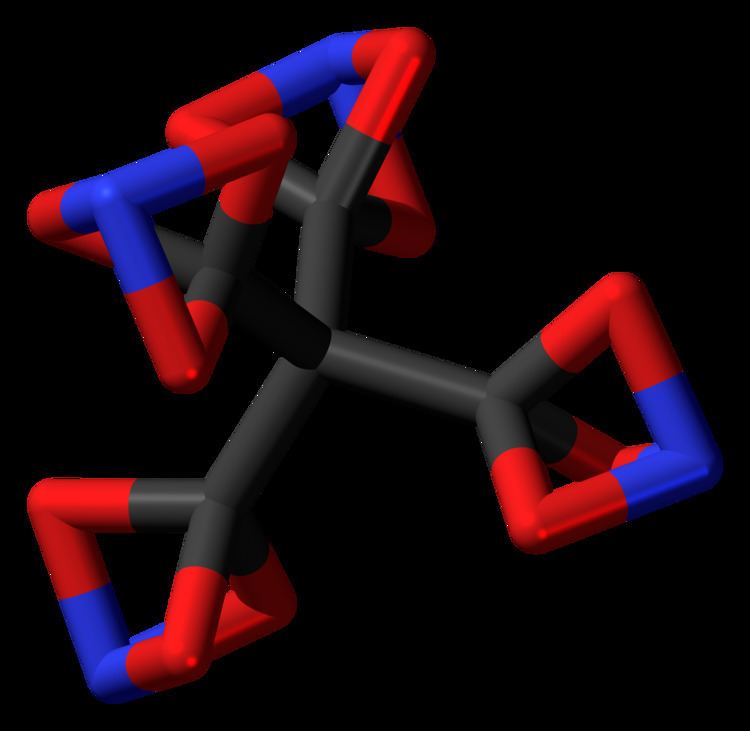Tetranitratoxycarbon, more formally known as tetrakis(nitratoxycarbon)methane, is a hypothetically-possible molecule, not yet synthesised, and unknown to science until ten-year-old Clara Lazen (a fifth-grader in Kansas City, Missouri) assembled a model of it in 2012. She is credited as co-author of a scientific paper on the molecule.
Contents

Prediction

Science teacher Kenneth Boehr was using ball-and-stick models to represent simple molecules during a fifth-grade class, when ten-year-old Clara Lazen assembled a complex model and asked whether it was a real molecule.

Unsure of the answer, Boehr sent a picture of the model to a chemist friend, Robert Zoellner, a Professor in Chemistry at Humboldt State University. Zoellner checked the molecule against the 'Chemical Abstracts' database and confirmed that Lazen's had a unique and previously unrecognized structure.

Zoellner wrote a paper on the molecule, published in Computational and Theoretical Chemistry, crediting Lazen and Boehr as co-authors.
Properties

Tetranitratoxycarbon consists of oxygen, nitrogen, and carbon, with molecular structure C(CO3N)4. As an oxygen-rich compound of carbon and nitrogen, similar to nitroglycerin, it is predicted to have explosive properties, but to be too thermally unstable for practical use.
Possible reactions

Tetranitratoxycarbon (since it has not yet been synthesized) has many possible reactions that it may undergo. For example, one possible equation for its decomposition is: C(CO3N)4 → 5CO2 + O2 + 2N2 with the standard enthalpy change equaling −1326 kJ/mol using the bond-energy method. Another potential reaction lies in its combustion with atmospheric oxygen, with the equation: C(CO3N)4 + O2 → 5CO2 + 2NO2 + N2 with the standard enthalpy change equaling −1144 kJ/mol.
